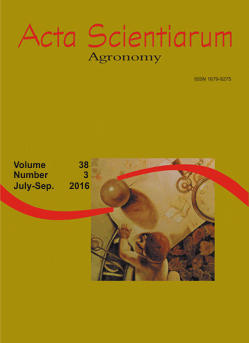<b>Agroclimatic zoning for jatropha crop (<i>Jatropha curcas</i> L.) in the State of Goiás
Resumo
Jatropha stands out in the Brazilian agribusiness scenario as one of the most promising nuts for biodiesel production, although there are few studies on this culture's introduction, management and cultivation techniques. Through the characterization of the state of Goiás' climate based on climate, rainfall and evapotranspiration maps, this work aimed to define areas suitable for the cultivation of Jatropha by designing an agroclimatic zoning system. Rainfall climatic data from 114 stations and air temperature data related to 34 stations were used. The zoning did not show any area that was considered unsuitable for the cultivation of Jatropha in the state, with much of the territory having full culture capability and some marginal regions characterized by water deficit or thermal deficiency. Throughout the state of Goiás, 64.6% of its territory is fit for the cultivation of Jatropha, whereas 35.4% has some marginal conditions for culture development. Of the total of areas defined as marginal to the cultivation of pinion, 28.8% are considered marginal due to water deficits and 6.6% are considered marginal due to thermal deficiency.
Downloads
DECLARAÇÃO DE ORIGINALIDADE E DIREITOS AUTORAIS
Declaro que o presente artigo é original, não tendo sido submetido à publicação em qualquer outro periódico nacional ou internacional, quer seja em parte ou em sua totalidade.
Os direitos autorais pertencem exclusivamente aos autores. Os direitos de licenciamento utilizados pelo periódico é a licença Creative Commons Attribution 4.0 (CC BY 4.0): são permitidos o compartilhamento (cópia e distribuição do material em qualqer meio ou formato) e adaptação (remix, transformação e criação de material a partir do conteúdo assim licenciado para quaisquer fins, inclusive comerciais.
Recomenda-se a leitura desse link para maiores informações sobre o tema: fornecimento de créditos e referências de forma correta, entre outros detalhes cruciais para uso adequado do material licenciado.




















































